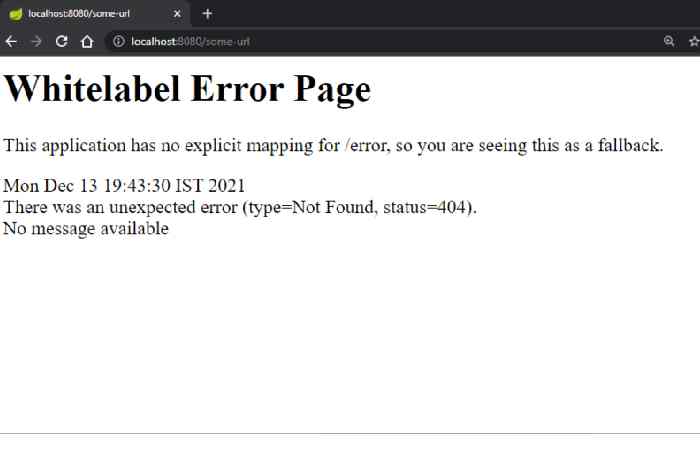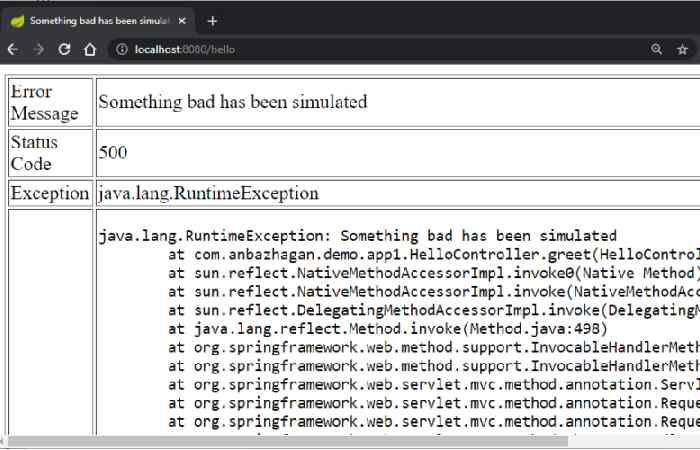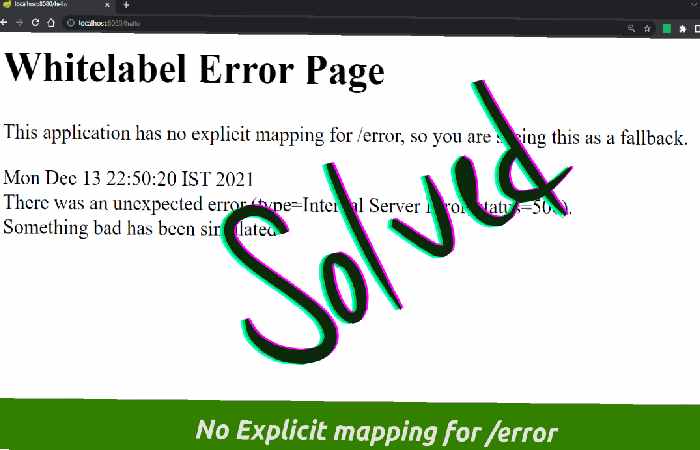The “this application takes no explicit mapping for /error” view is a typical Spring Boot-related issue. If you are new to Spring Boot, you may have seen this error already. And this is what you should do if you are looking to solve this issue.
What Causes No Error Mapping Found Fallback Error?
This application has no precise mapping for /error, so you see this as a fallback that can remain caused by missing error page configuration in the spring boot application, incorrect error page configuration, central class package location, or Use of @ComponentScan Annotation.
Missing Error Page Configuration
You can face that this application has no explicit mapping for /error, so you see this as a fallback error because of a missing error page configuration in your application. When an application encounters a mistake, it typically returns a specific error code, such as a white label error page type=internal server error status=500 or an unexpected error (type=not found, status=404). To indicate the nature of the error.
If the error page configuration is missing in your application, the application will not know how to handle the error and instead display the fallback error message. This application has no precise mapping for /error, so you see this as a fallback. The application cannot find a specific error page displaying the returned error code.
Incorrect Error Page Configuration
There was a surprising error (type=internal server error, status=500). It may occur due to an incorrect error page configuration in your Spring Boot application. If the error page remains incorrectly configured, the application will show the fallback error message. This application has no obvious mapping for /error, so you see this as a fallback.
Ensure the error page is configured correctly, including specifying the correct path and double-checking for typos.
– Main Class Package Location
The Spring Boot application’s main class should remain in the project hierarchy’s root package above other packets containing different categories, such as controllers, models, etc. Spring may not scan these packages when the main class remains in a sub-package. This application has no obvious mapping for /error, so you see this as a fallback or Whitelabel Error Page 404 error.
Solution 1: Implement the ErrorController Interface
You could provide your implementation of ErrorController. For example, the below controller will display a static error message instead of a white label page.
@Controllerpublic class CustomErrorController implements ErrorController { @RequestMapping(“/error”) @ResponseBody String error(HttpServletRequest request) { return “<h1>Error occurred</h1>”; } @Override public String getErrorPath() { return “/error”; }}Code language: PHP (PHP)
This way, you remain to provide a mapping for /error and a static HTML as a response. Look at BasicErrorController if you need to make this response more dynamic.
Solution 2: Offer An MVC Template For Error
This approach is perhaps the best way to handle the” no explicit mapping for /error” message. Using a templating appliance like Thymeleaf, you could provide an error.html.
As the MVC views can access the exceptions and error messages, it is easier to define a template and let the templating engine render you. To achieve this, make definite you have a templating machine in place.
What Does The Spring Boot /Error Mapping Describe?
Spring Boot /error mapping describes how Spring Boot manages errors while processing requests. Using the /error endpoint in Spring Boot, a mistake that arises while processing a request may be mapped to a particular error page or handler.
It gives developers more flexibility over how errors remain shown to end users by enabling the definition of bespoke error pages or handlers.
How to Explicitly Define /Error Mapping in Spring Boot?
You can explicitly define /error mapping in spring boot by creating a custom error controller class that implements the ErrorController interface. Create a custom error controller to handle the “/error” endpoint and register it as a bean in the Spring context with @Controller annotation.
Conclusion
We explored the causes and solutions for this error. It is time for you to see the reason for your case and find the solution accordingly. To solve the error, you can configure the error page or verify the error page configuration. Application Has No Explicit Mapping.
Also read: workforce software monday

